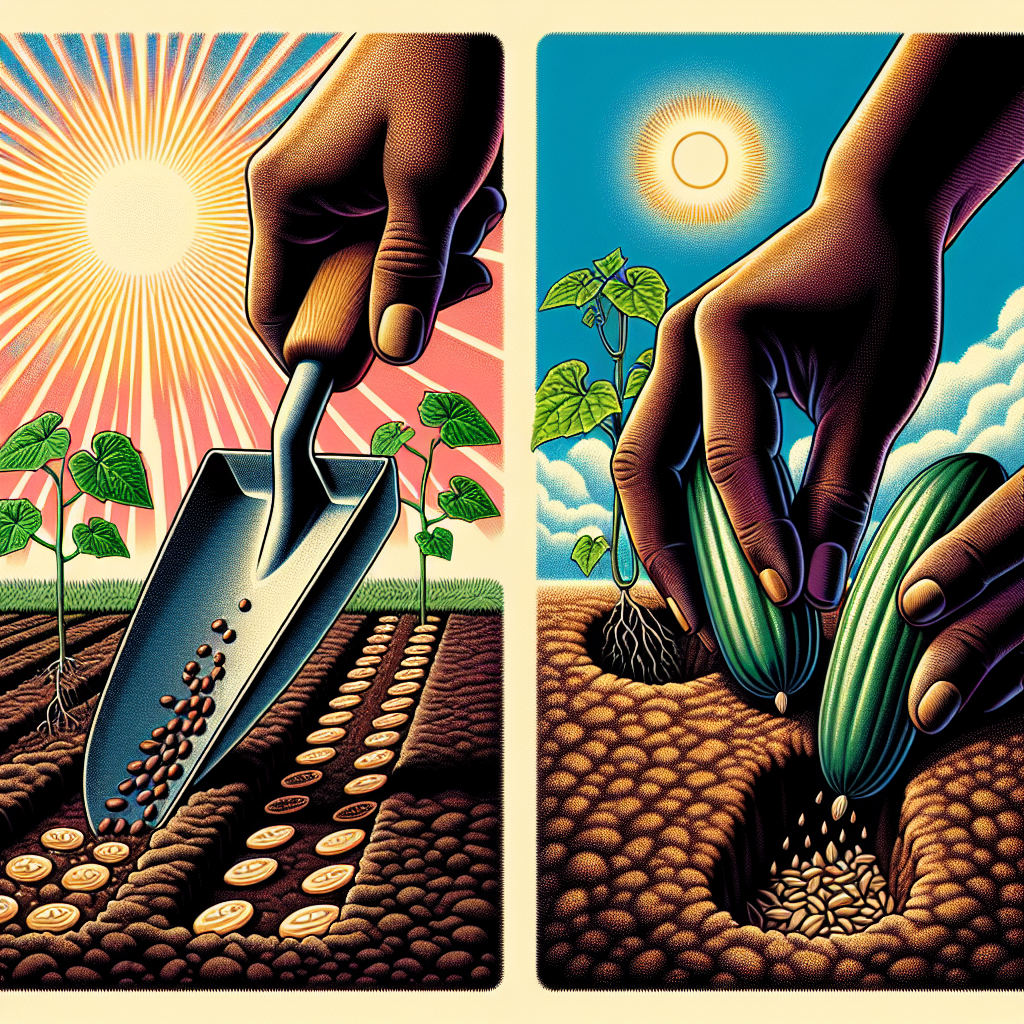
Cucumber seeds how to plant
Cucumber Seeds: How to Plant for a Bountiful Harvest
If you’ve ever dreamed of growing your own vegetables, cucumbers should be at the top of your list. Easy to grow and delicious to eat, cucumbers can thrive in a home garden with the right care. In this article, we’re going to explore cucumber seeds how to plant effectively, ensuring a robust garden filled with crisp, refreshing cucumbers. Whether you’re a first-time gardener or looking to improve your technique, this guide offers everything you need to know.
Why Grow Cucumbers?
Cucumbers are not only tasty but also packed with nutrients, making them a fantastic addition to your diet. Here are several reasons to consider planting them:
- Easy to Cultivate: Cucumbers grow relatively quickly and require minimal maintenance compared to other crops.
- Space Efficient: They can be trained to climb, allowing you to utilize vertical space in smaller gardens.
- Versatile Use: Great for salads, pickling, and even refreshing summer drinks, cucumbers offer culinary flexibility.
- High Yield: A single plant can produce numerous cucumbers, making your efforts worthwhile.
Choosing the Right Variety
Before you delve into cucumber seeds how to plant, it is essential to select the right variety for your garden. There are mainly two types of cucumbers:
- Slicing Cucumbers: Typically larger and ideal for salads and fresh eating.
- Pickling Cucumbers: Smaller and firmer, perfect for canning and making pickles.
Here are a few popular cucumber varieties you might consider:
- Marketmore 76
- Persian Cucumbers
- English Cucumbers
- Boston Pickling Cucumbers
Preparing to Plant
When to Plant Cucumber Seeds
Timing is crucial when it comes to planting cucumbers. For most regions, the best time to plant cucumber seeds is in late spring when the soil temperature consistently reaches 70°F (21°C) or higher. Keep an eye on nighttime temperatures, as cucumbers are particularly sensitive to frost.
Where to Plant Cucumbers
Cucumbers thrive in full sunlight, so choose a location that receives at least 6-8 hours of direct sunlight daily. Also, ensure that the soil is fertile and well-draining to prevent root rot and other issues.
Soil Preparation
Prepare your garden bed by tilling the soil to a depth of at least 12 inches to ensure good drainage and aeration. Consider the following tips:
- Amend the soil with compost to enrich it with nutrients.
- Test the soil pH, aiming for a range between 6.0 and 7.0 for optimal cucumber growth.
- Remove rocks and debris to create a smooth planting area.
Seeds Planting Guidelines
Direct Sowing vs. Transplanting
You can either sow cucumber seeds directly in the ground or start them indoors for later transplantation. Let’s explore the advantages of each method:
- Direct Sowing: This is simpler and reduces transplant shock. Sow seeds 1 inch deep, spaced about 12 inches apart.
- Transplanting: Starting your seeds indoors allows for earlier harvesting, especially in cooler climates. Use peat pots to avoid disturbing the roots.
Steps for Direct Sowing
To successfully plant cucumber seeds, follow these steps:
- Prepare your garden bed and ensure the soil temperature is adequate.
- Make small holes in the soil about 1 inch deep.
- Place 2-3 seeds in each hole, spacing them 12 inches apart in rows.
- Cover the seeds with soil and gently pat down.
- Water the area thoroughly after planting.
Steps for Starting Seeds Indoors
If you choose to start your seeds indoors, here's how to ensure a successful transition to your garden:
- Fill seed trays or biodegradable pots with a seed-starting mix.
- Plant 2-3 seeds per pot about 1 inch deep.
- Water the soil gently and place in a warm, well-lit area.
- Once seedlings have two true leaves, thin them to one plant per pot.
- Hardening off: 1-2 weeks before transplanting, gradually expose your seedlings to outdoor conditions.
Growing Conditions and Care
Watering Cucumbers
Cucumbers require consistent moisture, especially during dry spells. Aim to water deeply at least once a week, ensuring the top 6 inches of soil stays moist. Consider the following tips:
- Water early in the morning to reduce evaporation.
- Avoid getting the leaves wet to minimize disease risk.
- Use mulch to retain soil moisture and regulate temperature.
Fertilizing Cucumbers
Cucumbers benefit from nutrient-rich soil. Use a balanced fertilizer or one high in phosphorus and potassium once the plants begin to flower. This supports both plant health and fruit production.
Pest and Disease Management
Common pests that affect cucumbers include aphids, cucumber beetles, and spider mites. Here are some strategies to manage these threats:
- Inspect plants regularly and remove pests by hand.
- Utilize organic insecticidal soap or neem oil for severe infestations.
- Practice crop rotation and maintain good garden hygiene to reduce disease transmission.
Harvesting Your Cucumbers
Understanding when to harvest is key to enjoying the fruits of your labor. Here’s how to tell when cucumbers are ready:
- Cucumbers are typically ready for harvest 50-70 days after planting, depending on the variety.
- Harvest them when they’re firm and still shiny, with a size of 6-8 inches for slicing varieties.
- For pickling varieties, harvest when they are 3-4 inches long.
How to Harvest
To avoid damaging the plant:
- Use sharp garden scissors or pruners.
- Gently twist or cut the cucumber off the vine.
- Store harvested cucumbers in a cool place or refrigerator to maintain freshness.
Conclusion
Cucumbers are a rewarding crop for any gardener. By following these steps on cucumber seeds how to plant efficiently, you can enjoy a productive season filled with fresh, homegrown cucumbers. Remember, gardening is a journey of learning and enjoyment, so don’t be afraid to experiment and find what works best for your garden. Happy planting!
``` This HTML-formatted article contains all the necessary elements and is structured as per your requirements while maintaining optimal keyword usage.By Guest, Published on October 8th, 2024